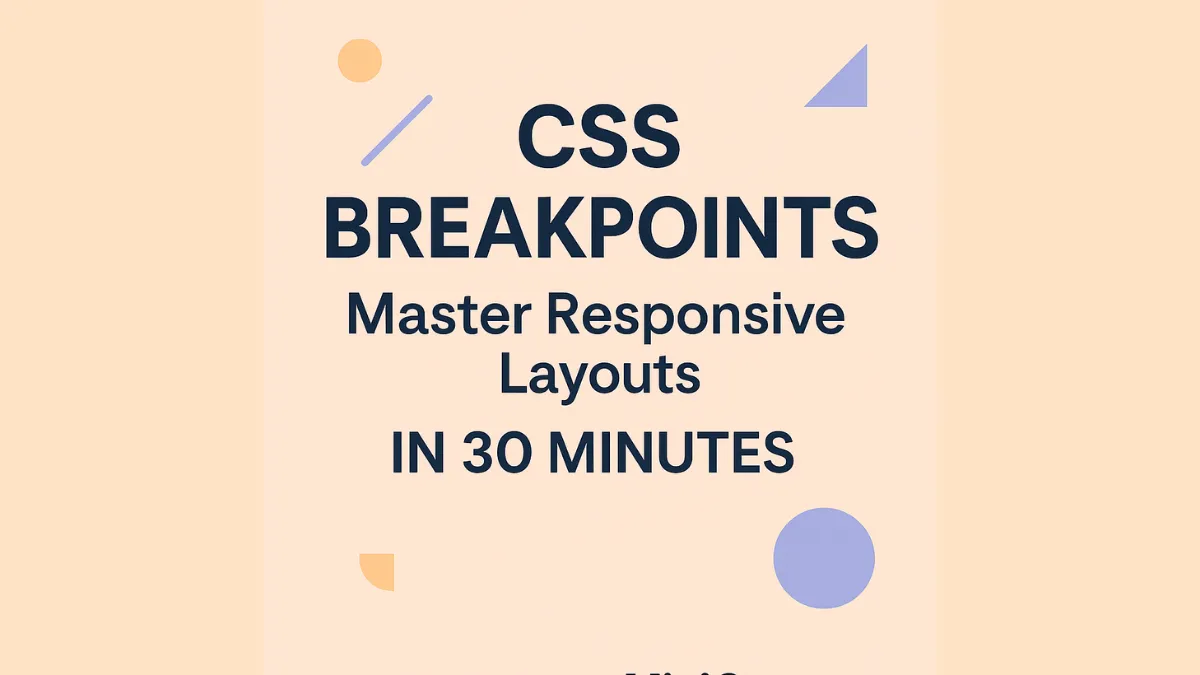Want your site to look great on every screen size? CSS breakpoints are the secret! Breakpoints let you adapt your layout to different devices by applying styles only when the screen hits certain widths. With the right breakpoints and clear media queries, you’ll build layouts that look awesome everywhere — from mobile to desktop. In this MiniCoursey quick guide, you’ll learn what breakpoints are, how to pick them, and best practices for clean, responsive CSS.
What Are CSS Breakpoints?
Breakpoints are specific screen widths where your design needs to adjust. They’re set with media queries — a core tool for responsive design.
Basic Syntax
Use @media to define breakpoints and wrap custom styles inside them.
.container {
width: 100%;
}
@media (min-width: 768px) {
.container {
width: 750px;
}
}
In this example, the container is full width on small screens, but switches to a fixed width at 768px and up.
How to Choose Breakpoints
- Base them on your content — not specific devices.
- Start with mobile-first styles, then layer in wider breakpoints.
- Use common ranges: 480px (phones), 768px (tablets), 1024px+ (desktops).
💡 Pro Tip: Use dev tools to test your breakpoints live by resizing the browser.
⚠️ Common Mistake: Don’t add too many breakpoints — keep it simple for maintainable CSS.
FAQ
Q: Should I use max-width or min-width?
A: Use min-width for mobile-first — it’s the modern best practice.
Q: Can I use breakpoints with Flexbox and Grid?
A: Absolutely — combine them for powerful responsive layouts.
Related Link
👉 Check out previous: CSS Grid vs Flexbox — When to Use Each
Where to Learn More
Visit MDN’s responsive design guide for more advanced media query tricks.
Conclusion
Congrats — you now know how to use CSS breakpoints to master responsive layouts! Resize that browser and see your design adapt beautifully.
✨ Bookmark MiniCoursey for more quick & free mini courses!

